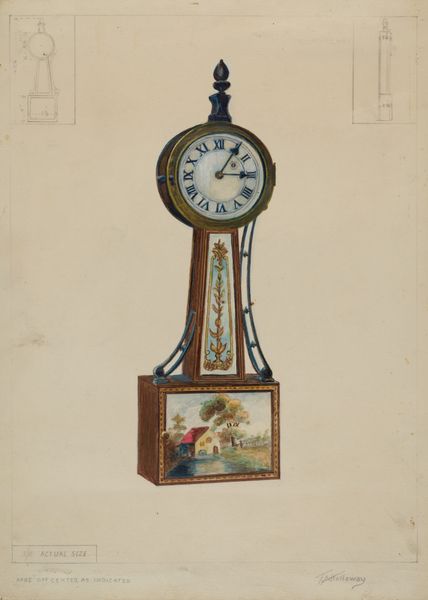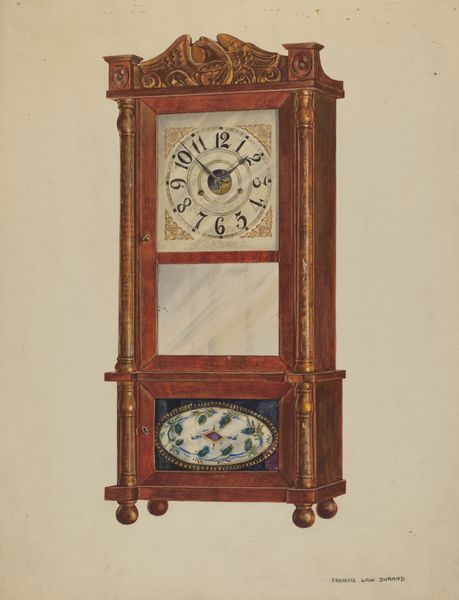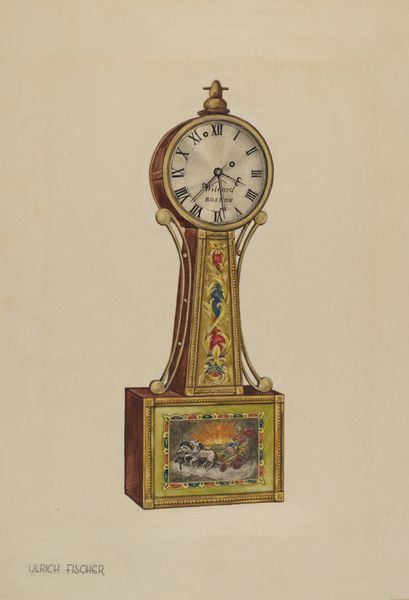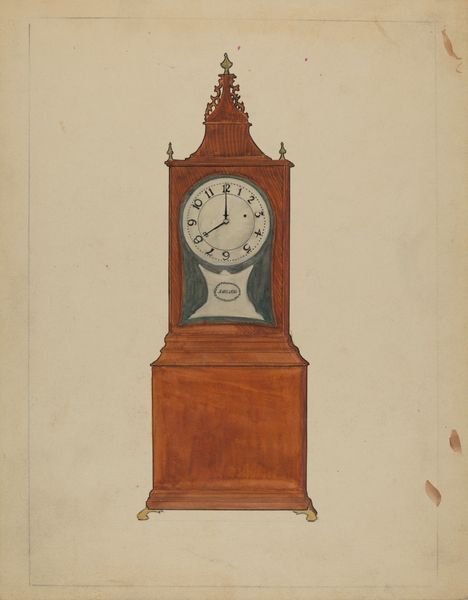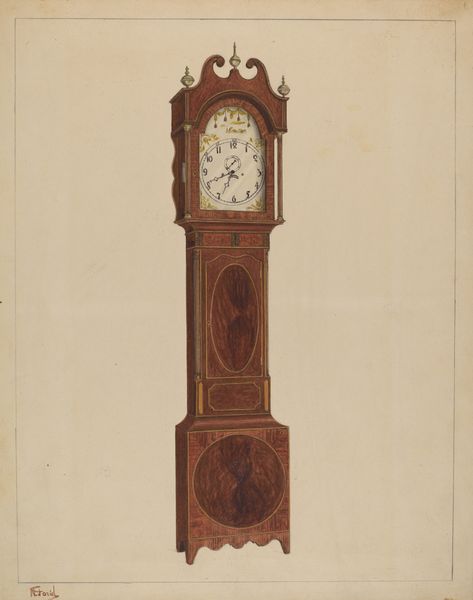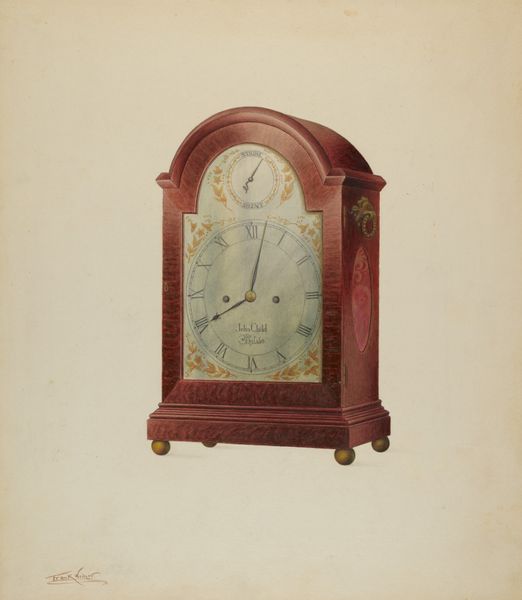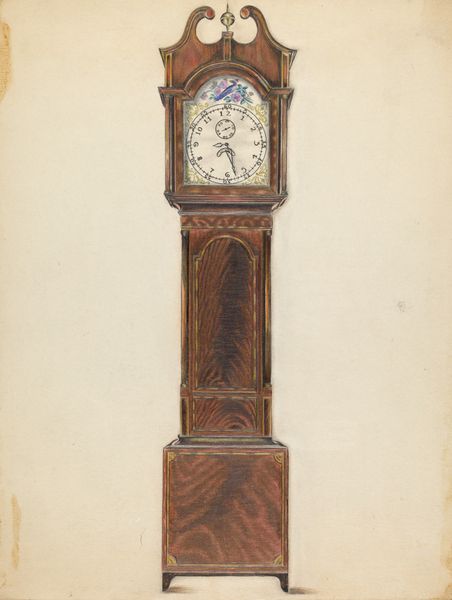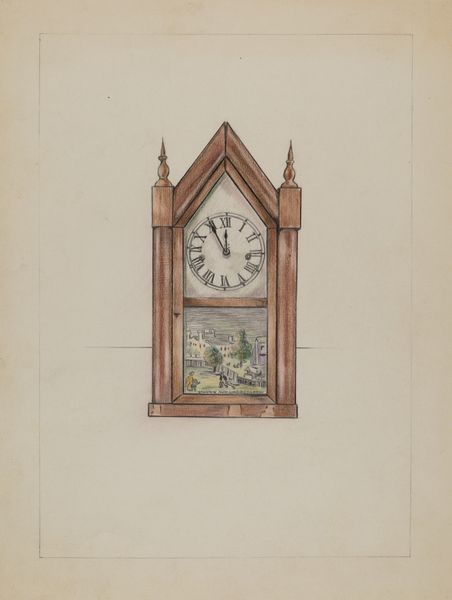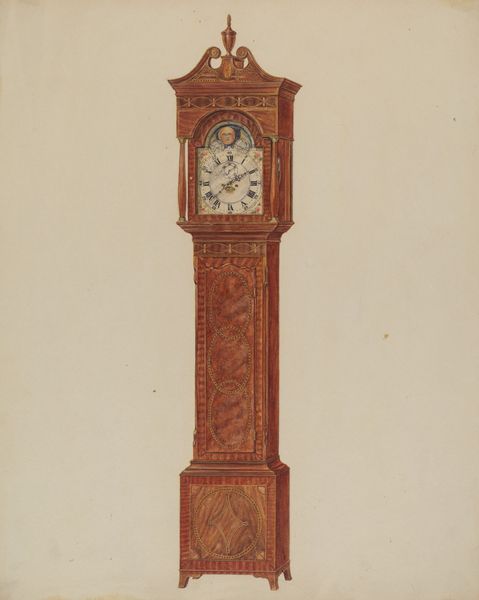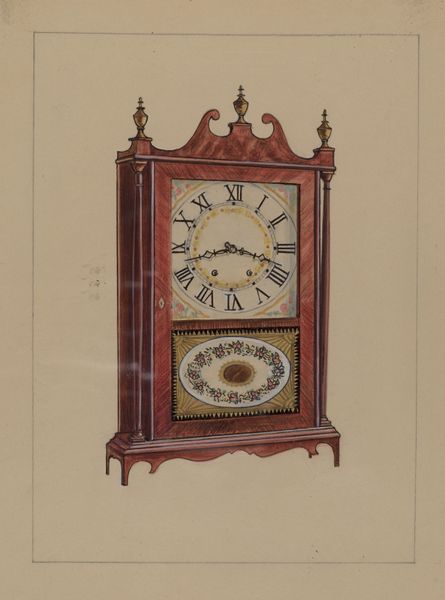
drawing
#
drawing
#
aged paper
#
toned paper
#
light pencil work
#
pencil sketch
#
cartoon sketch
#
personal sketchbook
#
sketchbook drawing
#
watercolour illustration
#
cartoon carciture
#
sketchbook art
Dimensions: overall: 28.3 x 22.5 cm (11 1/8 x 8 7/8 in.) Original IAD Object: 24"high x 15"wide at base.
Copyright: National Gallery of Art: CC0 1.0
Lawrence Phillips created this watercolor and graphite rendering of a clock, sometime between 1855 and 1995. The first impression is the curvaceous form and symmetrical design, a balance between the decorative and the functional. Consider the artist's composition. The clock's silhouette, with its cinched waist and rounded edges, presents a kind of hourglass figure, traditionally a symbol of time's passage. This is a semiotic play where the clock's shape itself becomes a signifier of temporality. Furthermore, the clock is bisected into two distinct registers. The upper portion features a traditional clock face adorned with delicate floral motifs. Below, a landscape scene offers a glimpse into a tranquil domestic setting. The interplay between these elements prompts us to ponder how Phillips merges the abstract concept of time with tangible, everyday life. Note how the artist’s choice to use watercolor and graphite serves to soften the image, giving it a dreamlike quality. It invites us to contemplate the relationship between time, memory, and the spaces we inhabit. Ultimately, this piece functions as a cultural artifact, prompting ongoing questions about the meaning we ascribe to time.
Comments
No comments
Be the first to comment and join the conversation on the ultimate creative platform.
